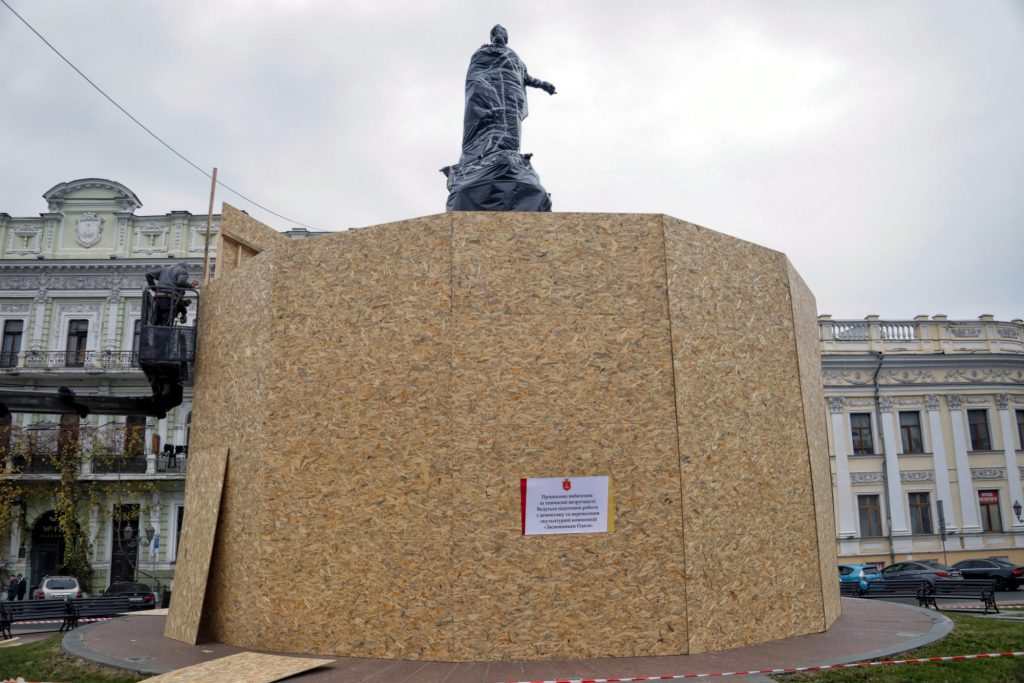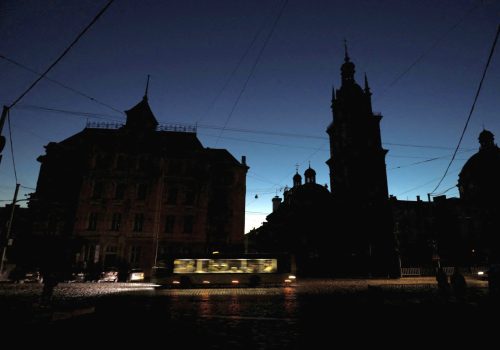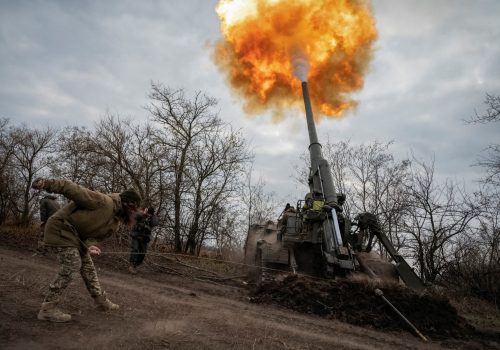Preparations to dismantle Odesa’s controversial Catherine the Great monument began in early November, with the site cordoned off and the figure of the Russian empress covered in a decidedly undignified shroud of black plastic. While final confirmation of Catherine’s removal is still pending, her fate appears to be sealed. She has fallen victim to radical changes in public opinion as Vladimir Putin’s brutal invasion forces Ukrainians to re-evaluate attitudes toward their country’s imperial Russian past.
The Catherine the Great statue in Ukrainian Black Sea port city Odesa has long been one of the country’s most politically controversial monuments. It was unveiled in 2007 during an escalation in Ukraine’s post-Soviet memory wars following the country’s landmark 2004 Orange Revolution. While patriotic Ukrainians were busy erecting monuments to figures from the country’s formerly outlawed national liberation movement, Odesa’s decision to honor the Russian empress with a statue was widely viewed as a defiant and deliberate demonstration of pride in the imperial past.
In the wake of Russia’s 2014 invasion of Crimea and eastern Ukraine, the Ukrainian authorities passed a series of decommunization laws that led to the dismantling of thousands of Soviet era monuments across the country and the renaming of streets, villages, and entire cities. However, this legislation did not apply to the Czarist era and had no impact on the status of Odesa’s Catherine monument.
Although there were no legal grounds for the removal of Catherine, her continued presence often sparked political conflicts within Odesa society and on the national stage. This tension reflected growing demands to reassess the nature of Ukraine’s relationship with Russia as a new generation of Ukrainians increasingly questioned the imperial dogmas established by centuries of Czarist and Soviet official histories.
Many also objected specifically to Catherine and pointed to her personal role as a key figure in the subjugation of Ukraine. While the Russian empress is known internationally as Catherine the Great, significant numbers of Ukrainians object to this title and regard her instead as a notorious tyrant. They note that Catherine extinguished the broad autonomy of the Ukrainian Cossacks and oversaw the aggressive colonization of Ukraine.
Stay updated
As the world watches the Russian invasion of Ukraine unfold, UkraineAlert delivers the best Atlantic Council expert insight and analysis on Ukraine twice a week directly to your inbox.
Catherine’s eighteenth century reign is closely associated with the imperial myths that now serve as historical justification for Vladimir Putin’s campaign to reconquer Ukraine and destroy Ukrainian statehood. Under Catherine, Russian imperial power expanded into southern Ukraine and Crimea, with the Czarist authorities posing as pioneers and founders of towns and cities such as Odesa that in reality had already existed in one form or another for centuries.
It was during this period that Catherine’s favorite, Grigory Potemkin, is said to have erected the infamous “Potemkin Villages” along the banks of Ukraine’s Dnipro River in order to create the false impression of a prosperous and happy colony for the visiting empress. Some historians now believe the legend of the Potemkin Villages may itself be a fabrication, but critics of Catherine nevertheless see it as fitting that her oppressive conquest of Ukraine is associated with one of history’s most notorious political deceptions. To them, she is anything but “great.”
Despite this challenging legacy, Odesa’s Catherine the Great monument was broadly popular among residents of the Black Sea port city until the full-scale Russian invasion of Ukraine began in early 2022. This popularity was not based on support for her actions against Ukrainian statehood or Cossack autonomy; instead, Catherine served as a symbol of the imperial identity that many in Odesa embraced following the Soviet collapse. She embodied the sense of pride Odesites felt over the prominent place occupied by their hometown in Russian imperial history.
Attitudes have changed dramatically since February 24. The shock and trauma of Russia’s invasion has convinced many Odesites to abandon their previous enthusiasm for the city’s Russian imperial heritage and has sparked a surge in public demands for the removal of Catherine.
It is not hard to see why. From the early days of the invasion, it has been clear that Odesa is one of the Russian army’s primary objectives. The city’s port has been blockaded by the Russian Black Sea fleet, with the nearby coastline fortified in anticipation of a possible Russian amphibious landing. Inside the city itself, Odesites have grown used to the daily terror of missile airstrikes and kamikaze drone attacks.
Eurasia Center events

For Putin, Odesa has enormous strategic and symbolic importance. Capturing the port city would allow him to cut Ukraine off from the Black Sea altogether and strangle the Ukrainian economy. Most analysts agree that without Odesa, Ukraine would no longer be economically viable as an independent state. The city could also serve as an excellent launch pad for the Russian occupation of Moldova.
Odesa’s place in the Russian imagination also makes it a particularly valuable prize. Many of Putin’s compatriots view Odesa as a sacred Russian city and bitterly resent its present status as the southern capital of independent Ukraine. They regard Odesa as even more deeply entwined in Russian national identity than Crimea or Kyiv and sincerely believe the city’s return to Kremlin rule would help correct the injustice of the post-Soviet settlement.
Crucially, Putin has harked back to Catherine the Great in his attempts to provide historical justification for the invasion of Ukraine and the capture of Odesa. Likewise, Kremlin officials and regime proxies have actively revived the term “Novorossiya” (“New Russia”), which was coined during Catherine’s reign to refer to her imperial possessions in southern Ukraine. In areas of Ukraine occupied by Russian forces, Catherine’s legacy has been used to legitimize the Kremlin’s claims. This is part of a conscious attempt to change the optics of the invasion and portray Russia as liberator rather than an aggressor.
Unfortunately for Putin, Odesites have shown little interest in being liberated by him or his soldiers. On the contrary, they have rallied to the defense of their city and have loudly condemned the Russian invasion. One of the many ways in which Odesites have expressed their opposition to Russia’s imperial aggression is by demanding the removal of the city’s Catherine the Great monument.
The Odesa authorities were initially hesitant to bow to public pressure, with Odesa City Council refusing in September to support a proposal to dismantle the Catherine monument. However, following an online public vote, Odesa Mayor Hennadiy Truhanov announced on November 5 that he would now back calls for the removal of the statue. On day later, the monument was fenced in and a notice from the municipal authorities appeared announcing that it would soon be dismantled.
Skeptics caution that the saga of Odesa’s Catherine the Great monument may still be far from over and warn that recent steps could simply be a stalling tactic to ease tensions and prevent further embarrassing acts of vandalism. However, the symbolism of Odesa’s boarded up Russian empress is already undeniable and reflects the city’s decisive turn away from the imperial myth-making that Putin has tried so hard to exploit.
The Kremlin has sought to win Odesites over with a highly sanitized and largely mythical version of history, but Moscow’s appeals to imperial nostalgia have clearly fallen flat. While Putin’s Russia remains trapped in the past, today’s Ukraine is building its identity around a compelling vision of the country’s future as an increasingly self-confident European democracy. This has proved far more persuasive to Odesites than the authoritarianism, isolation, and endless aggression offered by the Putin regime.
For decades, Odesa was arguably Ukraine’s most Russophile city. However, the current invasion has made Russia so toxic that even formerly sympathetic Odesites no longer want anything to do with Moscow’s imperial agenda. Putin claims to be waging war in order to return “historic Russian lands,” but in reality he has only succeeded in convincing Ukrainians that there is no place for Russia in their country’s future, and no place for Russian Empress Catherine the Great in a free Odesa.
Oleksiy Goncharenko is a member of the Ukrainian parliament with the European Solidarity party.
Further reading
The views expressed in UkraineAlert are solely those of the authors and do not necessarily reflect the views of the Atlantic Council, its staff, or its supporters.

The Eurasia Center’s mission is to enhance transatlantic cooperation in promoting stability, democratic values and prosperity in Eurasia, from Eastern Europe and Turkey in the West to the Caucasus, Russia and Central Asia in the East.
Follow us on social media
and support our work
Image: Odesa's Catherine the Great monument boarded up in early November. (Nina Liashonok via Reuters Connect)




